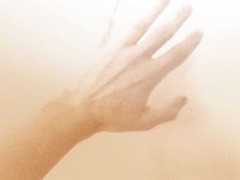A friend of mine – who I’ll call Jane – announced half-jokingly on Facebook that she “failed her graduated RTW.”
I followed up and learned she had tried to do an early return-to-work (RTW) program, but was held back by pain.
Jane told me she is recovering from an injury to the soft tissue and nerves in her fingers, which were sucked into the spinning rollers of a machine at work in September 2010. She’s been working with a hand therapist, who liaised with her employer and WorkSafeBC to set up an RTW program for her in January 2011.
RTW is based on the idea that “work is therapy.” Workers do actual work at their own workplace, rather than therapeutic exercises at home or elsewhere. Employers adapt jobs for injured workers, bringing them back ASAP, which has various advantages for all parties. Here’s a link to more info from WorkSafeBC on how Return to work is good medicine.
Managing pain at work
Pain was the biggest obstacle when Jane started the RTW program.
“I was literally crying in pain on a couple of days, during the first two weeks back,” Jane said, describing how she worked for 20 minutes, followed by 10 minutes soaking her hand in hot water. “It was a deep bone ache and the hot water eased it.”
At first, she worked only two hours a day. She was scheduled to move up to four hours a day in her third week, but didn’t.
“I couldn’t do it. My hand hurt way too badly,” she said.
After five weeks on two-hour shifts, Jane was still experiencing a lot of pain. She talked with her hand therapist, who consulted with her case manager at WorkSafeBC.
“I was very concerned that I wouldn’t be able to go back to four hours, let alone six with no support the next week,” she said.
Jane’s hand therapist phoned back quickly with a message from the case manager: stop the RTW program, effective immediately. Now she’s in an occupational therapy program for six to eight weeks of rehab and information.
“I think it will be a whole lot better than what I was muddling through at work,” Jane said. “There’s an educational aspect to it. They have classes on pain management, anger management, and sleep hygiene.”
I wish the best to Jane for her recovery – and kudos to her for trying so hard on her RTW program. Sometimes you just need a bit more time to heal, no matter how tough and determined you are.



